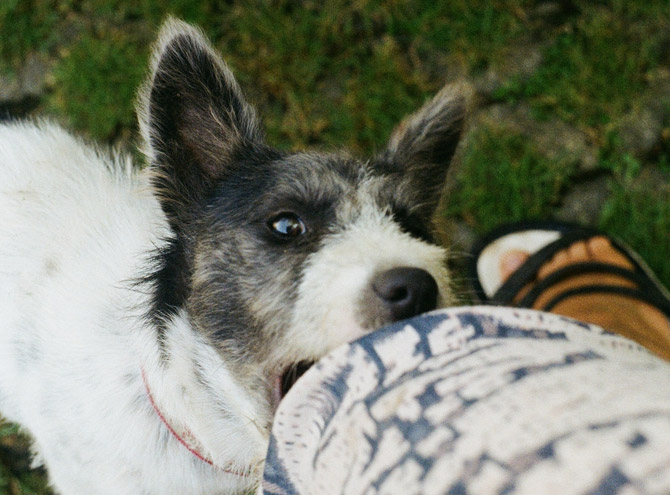National Dog Bite Prevention Week 2021 runs from April 11th to the 17th. It presents an ideal opportunity to raise awareness and educate people on how to prevent dog bites.
Sadly, dog bites in the community are not uncommon. The Australian Companion Animal Council Inc estimates that dogs attack more than 100,000 people in Australia annually, with an estimated 12,000–14,000 individuals requiring treatment for dog bites, and around 10% of those being hospitalised each year.
Furthermore, an article looking at the incidence of dog bites presenting to hospitals in Australia (ANZ Journal of Public Health) reveals that the highest number of dog bites are amongst infants and children in the 0-4 and 5-9 age groups.
In fact, the authors state that ‘dog bites are a largely unrecognised and growing public health problem in Australia’. So, as industry professionals, what role can you play in helping to educate the public about dog bite prevention?
What do we currently know about dog bites?
Dog bites are largely avoidable. As such, understanding who is most at risk of these incidences can help direct your conversations. For example, dog bites are most common amongst the 0-9 years age group and the over 80s. Injuries largely involve bites to the hands and forearms, as these are typically the parts of the body we put forward as our defense.
What’s more, the majority of dog bites occur at home or on the street. This might suggest that a person is more likely to be bitten by his or her own pet. Actually, a review of paediatric patients (Ghandi et al) admitted to hospital as a result of a dog bite showed that in 91% of cases the child was bitten by a dog they knew.
In addition, a paper by the AIHW National Injury Surveillance Unit on dog bites in Australia identifies the breeds involved in the majority of dog-bite incidences. The six dog breeds identified in three-quarters of all dog attacks are Bull Terriers, German Shepherds, Dobermans, Rottweilers, Blue Heelers and Collies.
Nonetheless, a 2012 report released by the Australian Veterinary Association (AVA) highlights the ineffectiveness of legislation that is directly aimed at certain breeds of dogs.
Certainly, expanding your own knowledge about dog bites should assist you to help prevent dog bites in the community—or, at least have meaningful conversations with clients and customers.
Preventing dog bites
While the Government has introduced legislation to control dangerous dogs and help reduce the number of dog bites, pet professionals can play a vital role. There are many actions you can take to help reduce the number of dog bites in the community. This includes:
- Encouraging owners to have their dogs desexed
- Educating the public on bite prevention strategies
- Encouraging socially responsible pet ownership
- Highlighting the importance of proper dog training
- Advising on the importance of early dog socialisation
Tips for customers & clients
The American Society for the Prevention of Cruelty to Animals (ASPCA) also offers the following tips:
- Understanding a dog’s behaviour and body language is paramount to avoiding an aggressive situation and a potential dog bite. Pet professionals can discuss signs of anxiety, fear and aggression to help owners to read the situation better.
- Teach children the importance of not approaching a dog that is eating, sleeping, caring for puppies, or chewing on a bone or toy.
- Help children to recognise signs of fear and aggression in dogs.
- Remind children to never touch an unfamiliar dog without first asking for the owner’s permission.
- Advise children that should an unleashed dog approach them, not to run or scream but to instead stand still and not make eye contact with the dog.
- Pet owners should be reminded of the importance of never leaving a child unattended with their dog.
- Owners are also responsible for teaching their children how to be gentle with their pet and the importance of giving the dog space.
Essentially, dog bites are largely avoidable. This makes the fact that dog bites are a growing public health problem a concern. The more we educate the public on dog behaviours and ways to avoid dog bites, the healthier and happier dogs and humans will be.
Related posts:
Protecting yourself, your staff & clients from dog bites
Dog bites: common areas bitten & how to treat
Information sources:
Rajshekar M et al. The incidence of public sector hospitalisations due to dog bites in Australia 2001-2013. July 2017. ANZ Journal of Public Health. Accessed online March 2021 via: https://doi.org/10.1111/1753-6405.12630
Dog-related injuries. AIHW National Injury Surveillance Unit. Flinders University. Sept 2005. Accessed online March 2021 via: https://www.aihw.gov.au/getmedia/f65ce1c9-b794-4886-9232-97318ce27eae/injcat75.pdf.aspx?inline=true
Dog bite prevention. ASPCA. Accessed online March 2021 via: https://www.aspca.org/pet-care/dog-care/dog-bite-prevention
Latest posts by Liz Walden (see all)
- Pet health: Medicinal cannabis for pets - December 27, 2021
- What pet business insurance do I need? - November 17, 2021
- Pet sitters: how to take time off - November 15, 2021










Leave A Comment